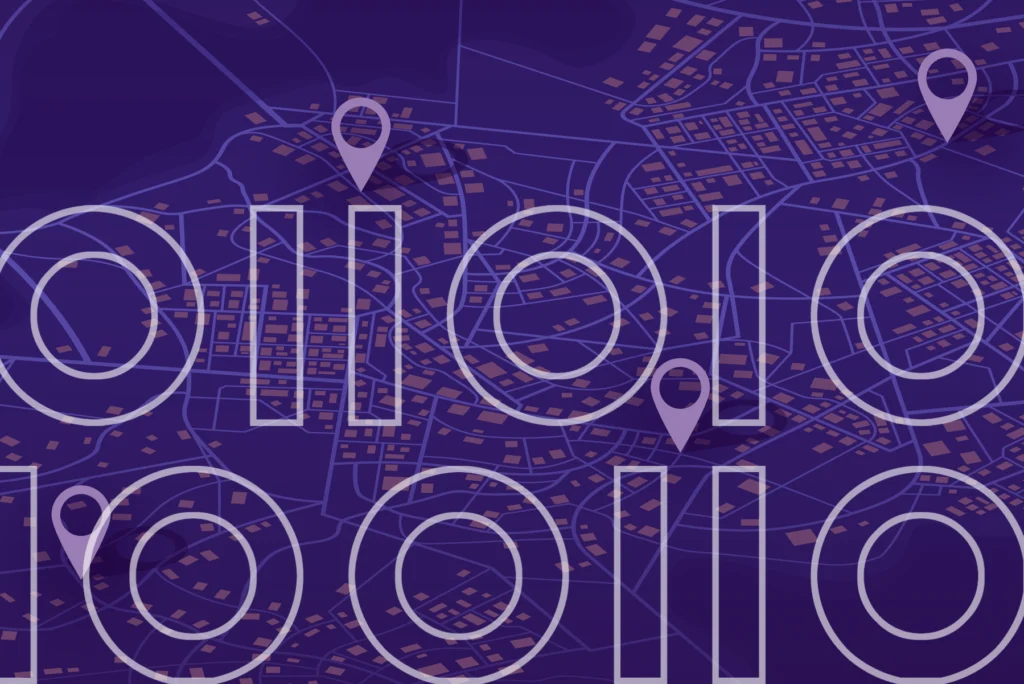A single address can tell you an enormous amount of information about a customer. It doesn’t just tell you where that person lives; an address, when combined with other information, can give you a sense of a person’s socioeconomic status, demographic data, and their liability and risk. That’s location intelligence!
We’ve put together a set of three location intelligence examples that serve as use cases for the insights you can get out of location data. Read on to learn more about how firms in the retail, insurance, and telco industries are using location intelligence today.
Use Case 1: Location intelligence in Retail
The first of our location intelligence examples is a large Canadian drugstore chain that has 470 locations, serving 200 communities across the country.
Selecting a site for a new retail location is critical. The company devotes a significant amount of time and resources toward this process. Over 20 staffers work on finding new sites for the chain’s stores. It can take anywhere from 18 to 24 months to find a new site. Team members look at how stores are performing, what growth potential exists in new markets, what marketing and merchandising opportunities exist, and how they can deliver the highest ROI to stakeholders.
The risk of not finding the right location is substantial. The chain doesn’t want to invest the time, effort, and money into opening a new store, only to realize that it’s not performing properly because it’s not in the right geographic location.
That’s why this savvy drugstore chain turned to location intelligence to optimize the site selection process. The solution combines sales information with demographic and geospatial information. With that data, the solution runs sale projections for both the pharmacy and the front-end shop, so the chain’s decision-makers have a better sense of which sites will have the highest ROIs. The site selection staff can avoid wasting time on stores that won’t be profitable.
Now, every potential site that the site selection team considers is analyzed with the location intelligence solution. One of the benefits of the solution is that it provides a summary for C-level executives, yet it’s also robust enough for business users to get the answers they need. Since implementing its location intelligence solution, the Canadian drugstore chain has shortened its site selection decision process and saved on travel costs for executives, who no longer need to visit sites that don’t demonstrate the right ROI.
Read the white paper
Location Intelligence: The Data-Driven Paradigm Shift
Learn how you can use location data more effectively and transition from collecting location coordinates to achieving location intelligence.
Use Case 2: Location intelligence in Insurance
The second of our location intelligence examples comes from a French mutual insurance group company that is a leader in the French damages and liabilities market, insuring 11.5 million people. The company has 26,000 employees around the world, with over 21,000 in France.
One of its business units is the Risks Analytics Center, tasked with solutions for better managing portfolio exposure, improving risk selection, and anticipating climate crises. This is crucial today: there are more climate-related risks than ever before, and there are also more technology-related risks (such as malware and ransomware). Insurance companies must now reconsider their exposure to these risks and how they manage them, especially in light of changes to legal and prudential frameworks (in France, there’s the Solvabilité 2 directive, and changes have been made to Catnat, France’s national natural disaster prediction service).
As a result, the firm needed to foster an enterprise risk management culture to ensure the company is sustainable in the long-term. Location intelligence solutions play an essential role as the company uses spatial data analysis.
Spatial data analysis leverages the dynamic integration of geocoded addresses; the solution interprets information coming from business intelligence systems and provides dynamic, navigable maps in a web browser display. These maps can be distributed to various teams (actuaries, disaster management, geomarketing), for better decision-making. Maps contain third-party information, such as information about the climate, natural disasters, and demographic data, combined with details of risk portfolios, contract coverage, and previous losses.
Thanks to location intelligence solutions, the firm can continuously improve its algorithm for a refined risk calculation, so risk managers can evaluate complex pricing for industrial sites, calculate risks for a specific area, and organize on-site customer support.
Additionally, spatial analysis has created a competitive advantage for the company; it’s now the core of the firm’s risk management capabilities. The solution isn’t confined to the use of just actuaries, and it’s not only for desktop access; it’s now spread throughout the insurance group’s ecosystem, so relevant teams can make the right decisions.
Use Case 3: Location intelligence in Telecommunications
The final of our location intelligence examples is the Romanian branch of a highly successful telecommunications operator. The Romanian branch has 10 million customers across the country, nearly half of the active mobile telephony users.
Transparency is one of the firm’s core values. To deliver that value, the company makes information about coverage areas as well as service outages widely available. Customer service representatives need that information immediately so they can help customers.
The company needed to centralize that data to make it easier for customer service representatives to access it. That’s why the company turned to a location intelligence solution. Originally, the solution served as a repository for information about services, coverage, equipment, incidents, alarms, and customer complaints.
As consumer technology developed further, decision-makers at the telecom company realized it was time to redesign the location intelligence solution it used. There were requirements that the revamped solution would have to meet; for a start, it couldn’t run in the cloud due to confidentiality concerns. It also had to be user-friendly and help customer service representatives do their jobs better.
The revamped location intelligence solution runs on-premises. It houses a wide array of information, including signal quality and services available at a given address and each antenna’s location and coverage. While revamping the solution required quite a bit of customization, modules within the solution made it possible for the staff to carry out these changes, saving the company expensive consulting fees.
Additionally, the revamped solution is very user-friendly. The company has been able to roll out the solution to over 1,100 employees, and that’s just the start. The ability to analyze data has also been improved, so users can run analyses with a wider array of filters.
The bottom line
Location intelligence is a powerful tool for a wide variety of industries. It helps you find the right location for the highest ROI, reduce your risk so you’re profitable and sustainable, and better serve customers with the right information. Location intelligence examples demonstrate how this technology could work for you.
Learn how to use location data more effectively and transition from collecting location coordinates to achieving location intelligence, read Location Intelligence: The Data-Driven Paradigm Shift







